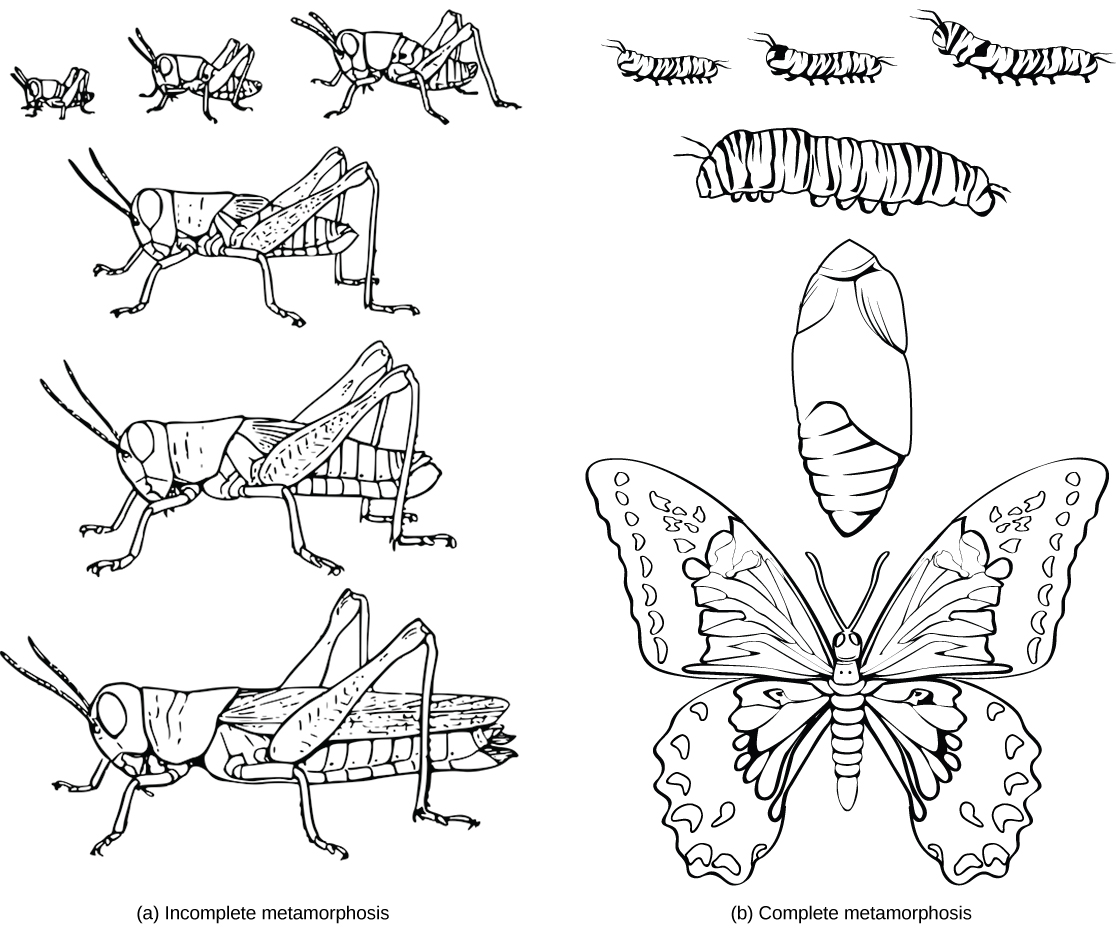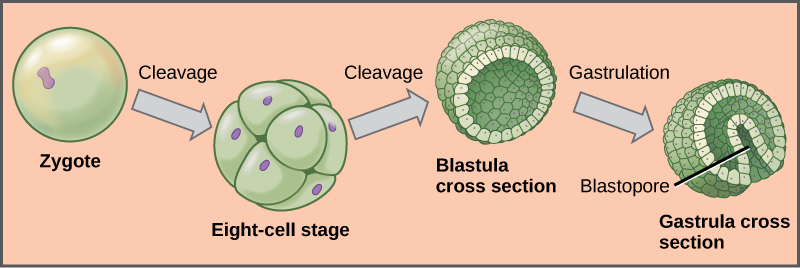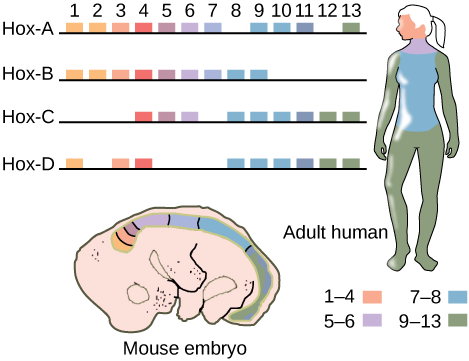| << Chapter < Page | Chapter >> Page > |

The process of animal development begins with the cleavage , or series of mitotic cell divisions, of the zygote ( [link] ). Three cell divisions transform the single-celled zygote into an eight-celled structure. After further cell division and rearrangement of existing cells, a 6–32-celled hollow structure called a blastula is formed. Next, the blastula undergoes further cell division and cellular rearrangement during a process called gastrulation. This leads to the formation of the next developmental stage, the gastrula , in which the future digestive cavity is formed. Different cell layers (called germ layers ) are formed during gastrulation. These germ layers are programmed to develop into certain tissue types, organs, and organ systems during a process called organogenesis .

Watch the following video to see how human embryonic development (after the blastula and gastrula stages of development) reflects evolution.
Since the early 19 th century, scientists have observed that many animals, from the very simple to the complex, shared similar embryonic morphology and development. Surprisingly, a human embryo and a frog embryo, at a certain stage of embryonic development, look remarkably alike. For a long time, scientists did not understand why so many animal species looked similar during embryonic development but were very different as adults. They wondered what dictated the developmental direction that a fly, mouse, frog, or human embryo would take. Near the end of the 20 th century, a particular class of genes was discovered that had this very job. These genes that determine animal structure are called “homeotic genes,” and they contain DNA sequences called homeoboxes. The animal genes containing homeobox sequences are specifically referred to as Hox genes . This family of genes is responsible for determining the general body plan, such as the number of body segments of an animal, the number and placement of appendages, and animal head-tail directionality. The first Hox genes to be sequenced were those from the fruit fly ( Drosophila melanogaster ). A single Hox mutation in the fruit fly can result in an extra pair of wings or even appendages growing from the “wrong” body part.
While there are a great many genes that play roles in the morphological development of an animal, what makes Hox genes so powerful is that they serve as master control genes that can turn on or off large numbers of other genes. Hox genes do this by coding transcription factors that control the expression of numerous other genes. Hox genes are homologous in the animal kingdom, that is, the genetic sequences of Hox genes and their positions on chromosomes are remarkably similar across most animals because of their presence in a common ancestor, from worms to flies, mice, and humans ( [link] ). One of the contributions to increased animal body complexity is that Hox genes have undergone at least two duplication events during animal evolution, with the additional genes allowing for more complex body types to evolve.

If a Hox 13 gene in a mouse was replaced with a Hox 1 gene, how might this alter animal development?
Animals constitute an incredibly diverse kingdom of organisms. Although animals range in complexity from simple sea sponges to human beings, most members of the animal kingdom share certain features. Animals are eukaryotic, multicellular, heterotrophic organisms that ingest their food and usually develop into motile creatures with a fixed body plan. A major characteristic unique to the animal kingdom is the presence of differentiated tissues, such as nerve, muscle, and connective tissues, which are specialized to perform specific functions. Most animals undergo sexual reproduction, leading to a series of developmental embryonic stages that are relatively similar across the animal kingdom. A class of transcriptional control genes called Hox genes directs the organization of the major animal body plans, and these genes are strongly homologous across the animal kingdom.
[link] If a Hox 13 gene in a mouse was replaced with a Hox 1 gene, how might this alter animal development?
[link] The animal might develop two heads and no tail.

Notification Switch
Would you like to follow the 'Biology' conversation and receive update notifications?